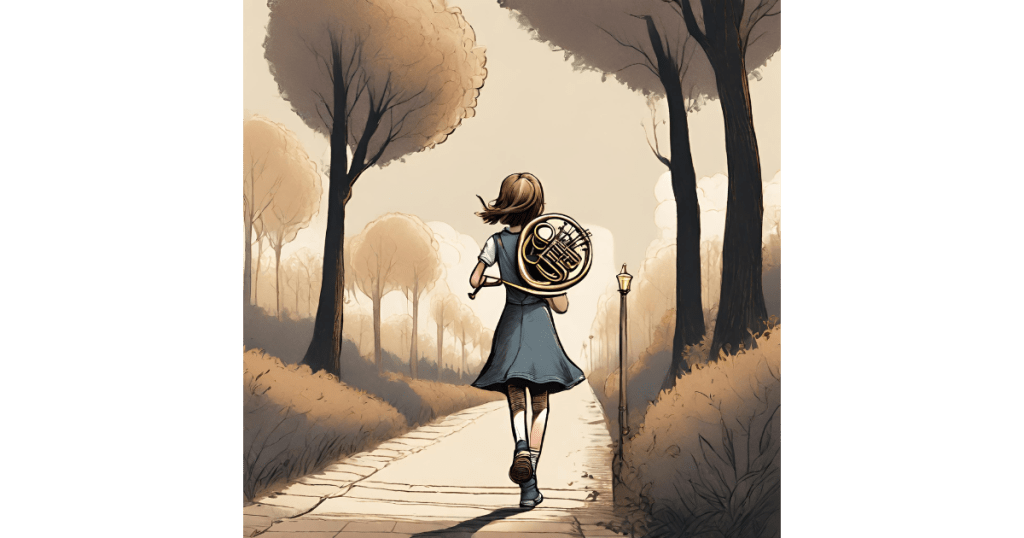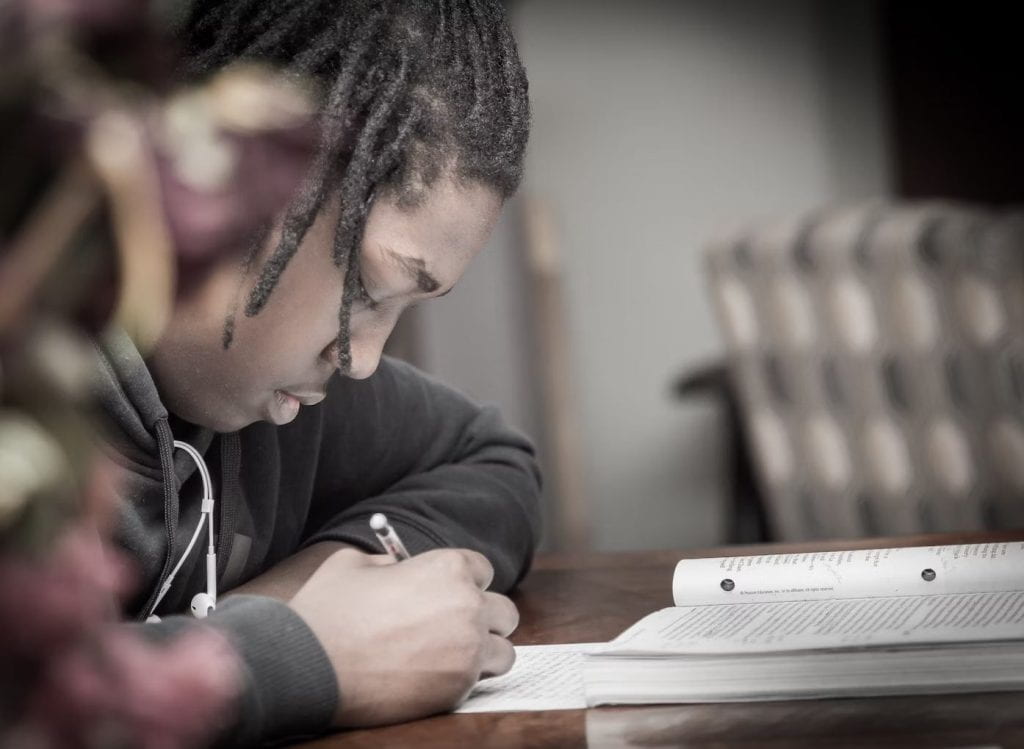How to Pursue Music After High School
Get yourself out there. Make sure you choose a place that you will excel at and one that you will enjoy your time at.

“Get yourself out there. Start contacting professors at colleges you are interested in and see who you like the most,” says Anleah Walker, 18, who is a high school senior planning to pursue a music performance degree. Walker has applied to several undergraduate music performance programs and plans on growing her horn musicianship. She plans to continue to audition throughout her college years to win a job and continue her career as a horn musician. Following her undergraduate education, Walker intends on furthering her education to become a horn professeur.
Pick a path that suits your passions. Pursuing music after high school, whether through a major or club, is beneficial in any capacity. Her father being a former band director, Walker has always immersed herself in music. “I started music in second grade with piano lessons,” Walker recounts her musical beginnings. “I quickly realized how much I enjoyed and was playing horn, bass, drums, and piano by fifth grade,” she says. Throughout elementary, middle, and high school, music has remained a constant in Walker’s life. Within high school, music has played a significant role in Walker’s experience, “Learning how to balance music with an academic and social life has taught me how to stay focused,” she says. Music in any form can spread benefits to the rest of your life.
Do not be swayed by the prestige of schools and programs. Considering both the college and the music program is a significant decision in choosing a path that will allow success. “Sometimes students feel that they need to go to the most known music school, but at the end of the day, the professor is the most important,” Walker warns. “Make sure you choose a place that you will excel at and one that you will enjoy your time at.”
Libraries Are Not a Thing of the Past

Libraries have stood the test of time, yet in an ever-growing digital world, some argue there is no use for brick-and-mortar libraries. However, libraries play a crucial role in communities across the globe, providing a haven of education, inclusivity, and community.
Libraries provide invaluable educational resources. They offer a wealth of reference materials and databases, empowering students and researchers to delve deep into research to pursue knowledge. For many, libraries are the gateway to higher education, sparking curiosity and critical thinking. In a time when misinformation runs rampant, libraries remain sources of reliable knowledge.
Furthermore, libraries provide a sense of inclusion. Increasingly conservative book bans censor books deemed “inappropriate” to children and teens, yet these stories are vital to sharing experiences. Representation is vital in impressional young children still discovering the world around them. Charles Blow discusses his personal experiences within libraries. He touches on topics such as inclusivity and representation. As a young boy in a conservative community, the stories he read in books validated his sexuality. Without this access, young LBGTQ may feel even more severe isolation and alienation due to their sexual and gender identities.
Libraries also play a vital role in building a community. They gather people from all walks of life to share their unique literature, culture, and ideas. Libraries host events, programs, and clubs, encouraging social interaction and intellectual discourse. From children’s book readings to mother support groups, libraries allow individuals to create friendships and exchange perspectives. In an increasingly distant society recovering from a pandemic, libraries serve as unifying spaces for a community.
Libraries are not archaic relics of the past but institutions indispensable to our society. They embody the pursuit of knowledge, foster a love for learning, and create spaces for community engagement. As we navigate the ever-changing landscape of the digital age, let us remember the enduring importance of libraries and support their mission to provide access to knowledge for all.
Works Cited
Antell, Karen, et al. “Self-Censorship in Selection of LGBT-Themed Materials.” Reference & User Services Quarterly, vol. 53, no. 2, Dec. 2013, pp. 104–07. Education Source, https://doi.org/10.5860/rusq.53n2.104.
Blow, Charles M. Opinion | Thankful for Libraries. The New York Times, 24 Nov. 2022, www.nytimes.com/2022/11/23/opinion/thankful-libraries-books.html.King, Rachael.
“Inside a Building Is a Book, but What’s inside a Book?” Press, 19 Oct. 2023, pp. 19. Newspaper Source Plus, https://research.ebsco.com/c/idf4ib/viewer/html/afto3fcbvf. Accessed 30 Nov. 2023.
Protected: A Meaningful Personal Experice
“What high school is like in 2023”

https://unsplash.com/photos/AZvGpBp925o
As soon as I entered high school, I knew of the unspoken pressure that had been put on my shoulders, the demand for excellence that would be expected of me. Navigating a grueling competition between peers with challenges at every turn was demanding as is, but amidst a global pandemic, it was nearly impossible. Days when my education’s uncertain future shadowed my previous childlike curiosity and passion for learning. In today’s high schools, the pursuit of education and knowledge has transformed into a cutthroat competition where students are more concerned with outperforming their classmates than actually learning.
More than ever, high school students are experiencing extreme pressure to succeed. Parental and societal expectations only fuel the growing competitiveness between students. College’s increasing interest in admitting a “well-rounded” student also stresses students to excel in athletics and extracurriculars on top of academics. With the rate of teenage depression continuing to rise and the immense issue of mental health in younger generations, toxic environments in school may be to blame. Where clubs and sports used to be a space for young people to socialize with their peers, these spaces have become another competitive environment where students struggle to set themselves apart. Stress, anxiety, and poor physical health are huge concerns in the increasingly strenuous education system.
For many teens, school has become a dreaded duty that provides little benefit to them. School should be a place where students can develop their ability to learn critical thinking skills; however, high schools today prioritize task completion and memory over performance and creativity. The standardized testing system utilized in schools today also cannot effectively evaluate a student’s learning and future potential. For students who do not wish to continue their academic career after high school, many of the required courses and materials do not help prepare them for their future careers.
Although people argue a competitive academic climate motivates students to work harder, the truth is what used to be a wholesome contest to achieve more has turned today’s schools into a toxic environment, detrimental to students’ mental health and self-esteem.
If high schools returned to preparing students for future careers and allowing them to find their passions rather than receiving the best grades to enter the most prestigious schools, teens would not have a drastic amount of pressure on them to succeed academically. Increasingly, over the past years, more colleges have not considered standardized test scores in admission. While this allows for a more inclusive and comprehensive view of students and their character, where will this movement continue? If standardized testing systems do not accurately depict students’ abilities, who’s to say a grade pode point average does?
Welcome to Hannah’s AP Blog!
Hello world!
Welcome to your brand new blog at Edublogs!
To get started, simply visit your blog’s dashboard, edit or delete this post and check out all the other options available to you.
Like more help?
We can walk you through step-by-step in our guide to getting started with your blog.
Happy blogging!